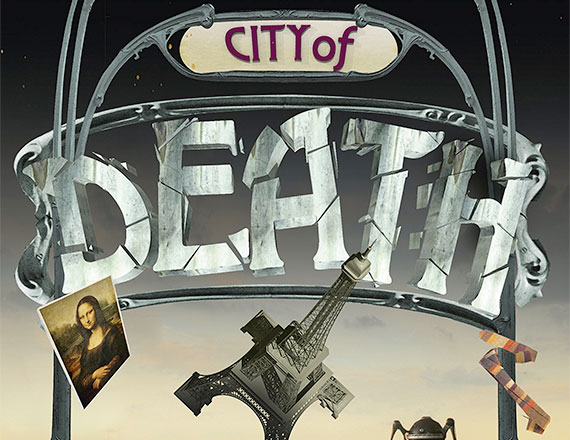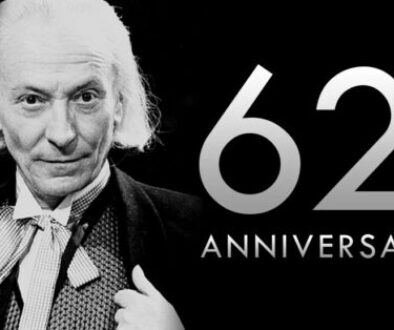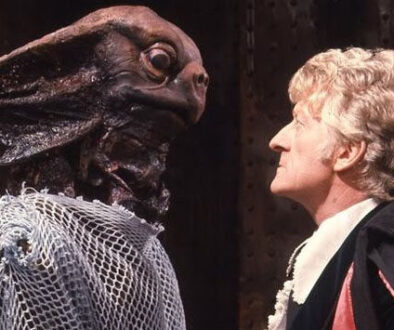City of Death (Novelisation) Review
Patrick Kavanagh-Sproull gives his verdict on James Goss’ novelisation of the classic adventure.

City of Death has really come a long way since that fateful Thursday in Graham Williams’ study. It tops polls on a regular basis, remains eminently quotable (“You’re a beautiful woman, probably”) and clocked in just over 16 million viewers on its first airing (thanks to a timely strike at ITV it was destined to live forever in the annals of Doctor Who). Even before its broadcast, City of Death had unique origins.
It started life as David Fisher’s A Gamble with Time and focused on a fiendish Count and his wife who were fixing the roulette at a casino in order to finance their time travel experiments. It sounds like it could have been fun but history had other ideas because in the eleventh hour the budget was miraculously scraped together to accommodate filming in Paris. Fisher would have tweaked his own script but personal problems got in the road and so, eventually, after one coffee and booze-fuelled weekend of frantic script-rewriting involving producer Graham Williams and writer Douglas Adams, City of Death was born. The filmed story still stands up to this day as a zippy, wry tour de force and so writer James Goss (assuming the mantle from Gareth Roberts) had a hefty task: he had to rework Adams’ popular adventure into book form, make sure it felt fresh and, above all, worth the effort. Question is: did he succeed?
 Despite City of Death being a story we all know very well, there’s a remarkable freshness to Goss’ interpretation (for those who have just crept out from under your rocks, City of Death sees Romana and the Doctor’s Parisian holiday go sour when they discover an evil Count is plotting to steal the Mona Lisa, and his scheme is somehow connected to the peculiar time distortions happening around the city). It’s not a strict novelisation but at the same time it doesn’t deviate massively from the original text. Goss has filled in the gaps and cracks in City of Death (taking inspiration from Douglas Adams’ script directions), ones that naturally don’t need represented on-screen. He has given us a novel that manages to stand up solidly on its own but also one that complements the source material.
Despite City of Death being a story we all know very well, there’s a remarkable freshness to Goss’ interpretation (for those who have just crept out from under your rocks, City of Death sees Romana and the Doctor’s Parisian holiday go sour when they discover an evil Count is plotting to steal the Mona Lisa, and his scheme is somehow connected to the peculiar time distortions happening around the city). It’s not a strict novelisation but at the same time it doesn’t deviate massively from the original text. Goss has filled in the gaps and cracks in City of Death (taking inspiration from Douglas Adams’ script directions), ones that naturally don’t need represented on-screen. He has given us a novel that manages to stand up solidly on its own but also one that complements the source material.
For example, Countess Scarlioni, a character given short shrift in the televised programme, is fleshed out considerably here, developing into someone we pity more than else. This may not bide well but Goss’ exploration of the Scarlioni marriage is actually one of the most interesting aspects of this literary rejig. Similarly, and this one is surprising, rather than playing up the Count’s suaveness, Goss paints him as more of a sympathetic character. He’s the last of his kind, he doesn’t actually realise he’s an alien until quite a bit of the way through, Count Scarlioni draws one of the shortest straws in City of Death (second only to Professor Nikolai Kerensky) and Goss makes sure we understand this. That’s not to say he doesn’t undermine the Count’s maniacal, villainous side because both Goss and the good Count himself relish it when one of Doctor Who’s most wickedly debonair monsters camps it up with a diabolical monologue or two.
Douglas Adams’ humour is one of the principle reasons why his Doctor Who episodes are always great successes. His affinity for understated one-liners and surreality combined with Tom Baker’s characteristically manic performances resulted in his episodes being some of that era’s best. Admittedly, The Pirate Planet is a bit of a slog but it’s still gleefully funny (it’s worth noting that James Goss is turning his attentions to that particular story next with a novelisation due next year. After City of Death, I have no doubt he’ll deliver another sterling adaption). There was always the possibility here that Goss could have simply relied on Adams’ already-there gags and helped himself to the stage directions’ wittiest lines but that’s far from the case.
City of Death is so packed to the gunwales with riotously (and, above all, Adamsesque in nature) funny lines that I had to use Post-it notes to bookmark my favourites (e.g. “Normally when his companions weren’t having fun they’d tell him so quite brutally. Often by getting married or, in one case, wandering off halfway through a rather thrilling battle with a supercomputer in the Post Office Tower”). His and Adams’ humour is identical and that strengthens City of Death in spades.
Last year Goss gave us The Blood Cell and it was, despite some early pacing problems, a gem. Goss has great descriptive prowess: a keen ability to vocalise a situation or circumstance that is almost indescribable (typically with hilarious results thanks to his rapier wit). It’s evident in City of Death and certainly livens up a novel that could come off as tired (given the world’s fondness and familiarity with City of Death. This is something Goss notes in his addendum, remarking that “there are about three people in the world who don’t like City of Death, and they’re steadily being hunted down”).
Verdict: 9/10
With humour drier than a bone, stuffed with page after page of one-liners and written with a unique style and verve, James Goss’ City of Death is more than worth picking up. It works as a supplement to the original televised story, an insight into some of Douglas Adam’s unused ideas, and as a brilliant Doctor Who novel on its own. For a book all about the Mona Lisa, don’t be surprised that City of Death is the true masterpiece here.
City of Death is released 21 May.








